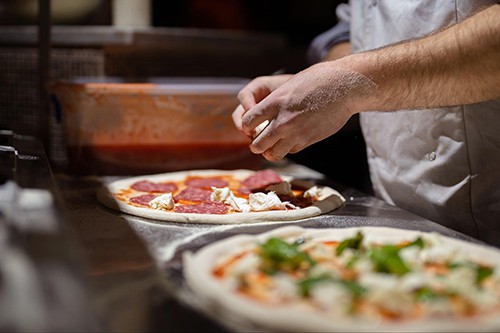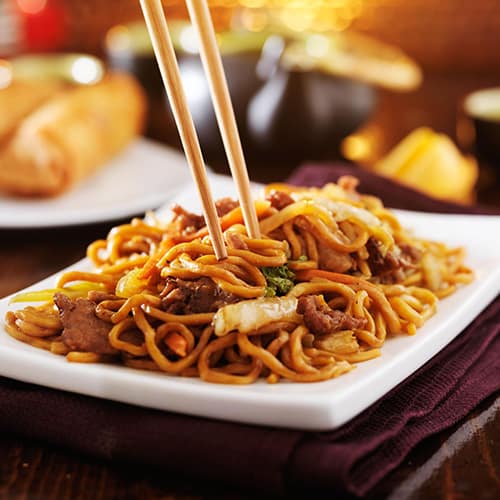The 14 Best Mobile Time Clock Apps in 2024
Get an accurate picture of work hours and labor costs with an app. We’ve creat...

Running a successful restaurant isn’t just about serving great food. It’s also about controlling restaurant costs so you don’t spend more than you make. And, as the old saying goes, you can’t control what you don’t measure (or calculate).
So, in this article, we discuss some of the most important restaurant costs, how to calculate them, and how to use them to run your restaurant better.

The term “restaurant costs” is generally used to describe one-time expenditures on material resources — such as food, liquor, dishes, equipment, and software — that keep the business running. These are also referred to as direct costs.
Restaurants may also have recurring payments, such as utilities, rent, payroll, and marketing. These are usually described as expenses or indirect costs.
However, to paint more of a picture of your business, we’re going to address both restaurant costs and expenses (and refer to them as “costs”) that your business aquires in order to operate efficiently.

Cost of goods sold (or CoGS for short) is the total direct costs of producing your restaurant’s menu items. Here’s how to calculate this essential restaurant cost.
Step One: Pick a time period you want to examine. It could be one week, two weeks, one month, two months, or something else entirely. Just be sure to make a note of the time you choose so you can use it in other calculations to produce an accurate comparison.
For the remainder of this article, we’ll use one month as our time period of choice.
Step Two: Take inventory of all the food supplies you have on hand at the start of the month and calculate a total dollar value for the entire inventory taken.
This will be your Beginning Inventory.
Step Three: Add the value of any Purchased Inventory you made during the period of choice.
Step Four: Take inventory at the end of the month using the same process you used in step two. This will be your Ending Inventory.
Step Five: Use the following formula to calculate Cost of Goods Sold (CoGS).
CoGS = (Beginning Inventory + Purchased Inventory) – Ending Inventory
So, for example, let’s say that your restaurant’s numbers looked like this:
Plugging those numbers into the equation, you’d get:
CoGS = (Beginning Inventory + Purchased Inventory) – Ending Inventory
CoGS = ($5,000 + $10,000) – $4,000
CoGS = $15,000 – $4,000
CoGS = $11,000
That number tells you that your restaurant spent a total of $11,000 to fulfill all the orders customers placed during the month in question.
To get even deeper into this number and how it reflects the financial health of your business, check out this article from the Sling blog: Food Cost Percentage: Definition, Calculation, and Optimization.

As restaurant costs go, the plate cost will tell you how much your business is spending to produce the specific dishes on your menu.
Step One: List the ingredients for a single dish. For example, a plate of scrambled eggs could include three eggs and 10 grams of butter.
Step Two: Go back through your inventory and determine the quantity and price of each item. Let’s say you purchase one dozen eggs and 500 grams of butter. You pay $2.04 for the eggs and $5.00 for the butter.
Step Three: Determine the cost of the ingredients used in each dish. In this example, the price of each egg is $0.17 ($2.04 / 12), and the price of 10 grams of butter is $0.10 (($5.00 / 50) x 10).
Step Four: Add the cost of all ingredients to get the total cost for the dish.
The total cost for your restaurant to produce a plate of scrambled eggs is $0.61.
This number can help you figure out what to charge your customer for the food so that you make a profit.

Labor costs are the sum total of everything you spend to keep your employees working for your business.
To calculate this number, you can either:
Or, better yet, use software like Sling to track your labor costs and project how much you’ll spend as you create your employees’ schedules.
As you investigate, be sure to include everything that has to do with your employees, including:
It’s also important to factor in other costs, including the benefits you pay your team and the healthcare contributions you make on their behalf.
For a deeper dive into labor costs and how they affect your business, take a few minutes to read these articles from the Sling blog:

Overhead restaurant costs refer to all the money you spend to keep the doors open and the lights on (your fixed expenses). It includes things like electricity, mortgage payments, natural gas, insurance, and supplies.
The dollar values of these products and services may change slightly (as you use a bit less or a bit more electricity, natural gas, and supplies), but the fact that you need to pay them regularly is what makes them fixed expenses.
For example, let’s say your restaurant spends the following amounts every month:
Your total overhead costs for the month would simply be the total of those items (or $8,000).
This is a very basic example, so, if you’d like to learn more about everything that goes into getting control of your overhead costs, check out this article from the Sling blog: How To Calculate Overhead Costs In 3 Easy Steps.
These restaurant costs include things like water, electricity, natural gas, internet, cable, cell phone service, etc.
Equipment costs can range from small items such as tableware and takeout containers all the way up to large items such as ovens, freezers, and tables.
Point of sale solutions come in all shapes and sizes. To control this cost, determine what your business needs — e.g., hardware, software, advanced functionality — and find a system that meets those requirements.

One of the largest restaurant costs you’ll likely have to contend with is labor — the wages, benefits, overtime, and other rewards that you provide to your team in exchange for their hard work.
Though controlling labor costs may seem like an overwhelming task, the Sling app puts all the tools you need right at your fingertips.
Sling’s labor costs feature gives you the ability to optimize your payroll as you schedule so that your spending doesn’t get out of control. You can set wages per employee or position and see how much each shift is going to cost.
For more free resources to help you manage your business better, organize and schedule your team, and track and calculate labor costs, visit GetSling.com today.
See Here For Last Updated Dates: Link
This content is for informational purposes and is not intended as legal, tax, HR, or any other professional advice. Please contact an attorney or other professional for specific advice.
Schedule faster, communicate better, get things done.